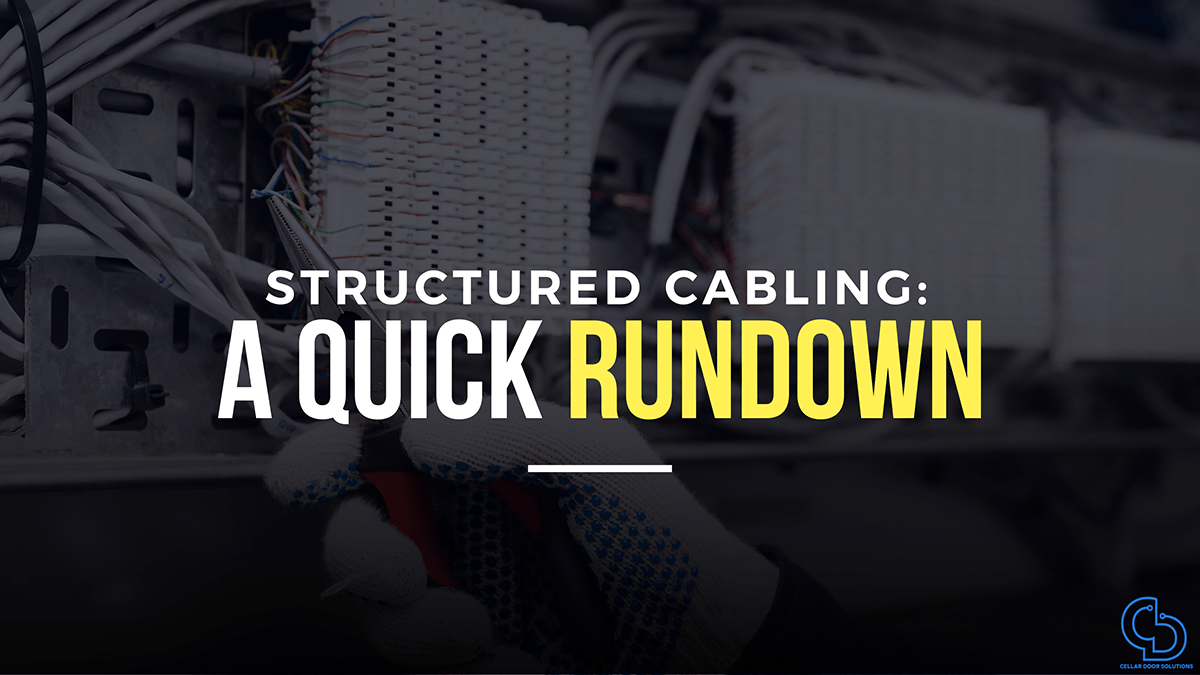Structured Cabling: What is it?
Structured cabling is all the communication wires that run throughout a building. Different systems can use these wires within the building. For example, a fire alarm system and all its related wiring may be a subsystem of the structured cabling of a building. Another subsystem could be the Networking cables that connect all the computers together to provide the internet. In each building, including homes, many systems that work together to provide you with the comforts of modern living. They operate quietly and, in the background, but are integral to our daily lives. In this article we are going to go over the different types of cables used in Structured cabling, the electrical codes involved, and some best practices used if you decide to tackle this on your own.
Different types of cable:
Phone cable (RJ-11):
As a structured cabling installer, you will often run into this RJ11 wire when installing newer cabling. This type of cable is used for the old phone systems. However, this cable is usually avoided in newer installations because it simply doesn’t allow enough bandwidth for modern installations. It also isn’t compatible with modern Ethernet switches.
Ethernet (Cat-5, CAT-5E, CAT-6):
Ethernet cable is the king of all structured cabling wire types and standards. Almost all switches use these types of cables in modern data centers. There are three different types of cable, CAT5, CAT5E, and CAT6. One of the biggest differences you will notice is the amount of bandwidth each wire can deliver. CAT-5 was designed for speeds up to 100Mbit per second, it offers minimal shielding from interference and is usually avoided in new installations because it cannot deliver the bandwidth necessary for modern gigabit switches.
CAT-5E is the most used type of ethernet cabling. It offers more shielding than the CAT5 standard and allows for speeds up to 1000 Gbit per second.
CAT-6 is the newest member of the CAT family. It offers much greater speeds and performance than the older CAT technologies but is about 20% more expensive.
Fiber Optic (Single-Mode, Multi-Mode)
Fiber Optic Cable operates on light instead of electrical pulses like the other cables. Light offers more advantages than copper. The main ones being faster speeds, longer distances, and better security. This results in most of our data being transmitted over fiber optic cable per mile than any other cabling.
There are downsides, the first being that it is far more expensive to install than ethernet or other copper-based technologies. It requires special training and equipment to install and more care must be taken during installation because it’s more fragile. That’s why the vast majority of structured cabling is not fiber optic. At the distances and speeds typical of buildings data needs, it just doesn’t make sense to install it within a structure.
Types of Fiber Optic Cable
There are two types of Fiber Optic cable. Single Mode and MultiMode. The difference between the two is the way that the light travels through the wire. In all fiber optic cable, the light bounces down a glass tube (also known as fiber) from one end to the next.
With MultiMode cable, the width of the tube is so large that multiple beams of light can cross one another which can muddy the signal by the time it gets to the other side.
In SingleMode cable, the width of the cable is very narrow, resulting in only one beam of light being able to pass through the cable. By the time the beam makes it to the other side, the beam is highly ordered, almost like people in a single file line. This results in the receiver on the other end making a much better sense of the signal.
So why is all cable not single-mode? Because at the scales required to carry a single beam of light down a tunnel, the equipment required to make, connect, and install this cable is an order of magnitude higher than with MultiMode cable! It’s far more finicky to install and requires very highly trained people with very expensive tools to build. It all boils down to cost!
Speaker Wire
Speaker wire has been around longer than any of the other cablings and usually ends up as an afterthought. Many people will demand you use “premium” speaker cable for sound clarity. I disagree. What’s most important is keeping the speaker wire away from other electrical disturbances. You don’t want to run the cable next to a power cable or a phone line and keep it away from other noise electric generators like AC motors.
Talk about POE (power of ethernet)
Tips and Tricks on installation (stay away from power cables, following the National Electric Code, Future Proofing)
More info here: https://www.mikeholt.com/instructor2/img/product/pdf/11LE-968-sample.pdf
Licensing
If you plan on installing Structured Cabling you may want to look at your state’s codes on proper licensing. In the state of Florida, a low voltage license is required for any kind of structured cabling job (including landscape lighting). In Florida, the scope of low voltage work is:
- Fiber optics
- Thermostats
- Data cable
- Appliances
- And any other electrical cable that runs on 98 volts or less (anything above that requires an even more stringent license)
